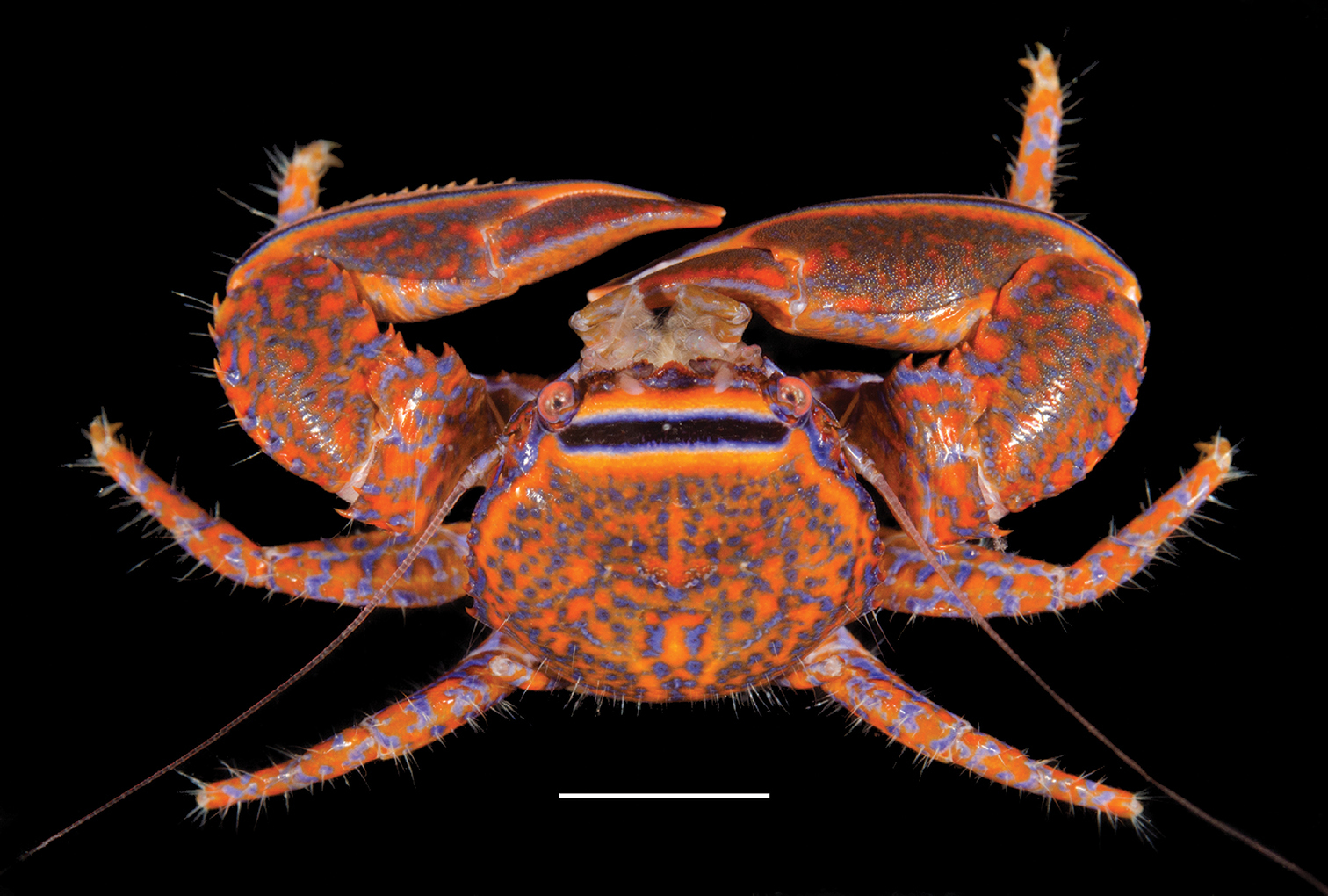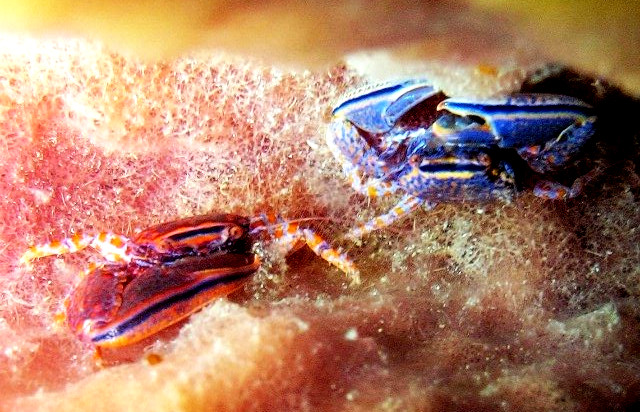
Aliaporcellana spongicola sp. n. Female (ovigerous) paratype, UF 43328 (Photo UF dPHIL 7104), Philippines, Oriental Mindoro Province, Mindoro, Puerto Galera, off Pt W of Bayanar Beach. Scale bar: 3.5 mm. Credit: Hiller & Werding 2018
Porcelain crabs (Porcellanidae) are all too often an overlooked part of coral reef ecosystems. This is partly by design, as most of the 100+ recognized species are cryptic in nature, either camouflaging themselves innocuously against the rocks to which they so tightly cling or mimicking any number of soft corals or sponges or anemones.
But for years now, divers have been documenting a gorgeous blue and orange porcellanid from the West Pacific which lives nestled deeply within the folds of Xestospongia barrel sponges. Despite being arguably the most colorful member of the whole family, it has until now remained scientifically undescribed, but this is thankfully no longer so.
Writing in the journal ZooKeys, Aliaporcellana spongicola is described from specimens collected in the Philippines and Sulawesi; however, additional records (e.g. Kashiwajima, Bali, New Guinea) show this crab likely resides throughout the Coral Triangle.
It varies widely in its coloration. Depending on the relative strength of the blue reticulations and the underlying orange pigmentation, individuals can appear almost entirely blue, while others (especially juveniles) can be lightly colored and mostly orange. Both of these phenotypes have been observed residing together within the same sponge, and all sorts of intermediate forms can be seen in diver photography, with some of the most beautiful specimens being those with a perfect mix of orange and blue.
Surprisingly, this highly desirable species has seemingly yet to be exported for the aquarium trade, despite it occurring quite commonly in places that see extensive collection. It certainly wouldn’t be hard to locate, given that it resides within gigantic orange sponges, and there would almost certainly be a market for them, though it raises an interesting question. Should we collect this species?
Barrel sponges are naturally an uncommon and sparsely distributed part of a coral reef, which likely means the total population of this porcellanid is equally limited. And no doubt these are all but impossible to remove from the deep crevices that they scurry about in, so it’s not hard to envision a scenario where an unscrupulous collector rips apart the host sponge to get at the elusive crabs within. Perhaps it’s for the best that this gorgeous new species is left alone. Some reef creatures are best appreciated in the wild, and I can only imagine how exciting it must be to find these little blue and orange gems in their native habitat.

Blue and orange phenotypes of Aliaporcellana spongicola, from Anilao, Philippines. These were treated as separate undescribed species in Allen et al‘s popular field guide. Credit: Kazuhiko Mori
- Hiller A, Werding B (2018) On a new commensal species of Aliaporcellana from the western Pacific (Crustacea, Decapoda, Porcellanidae). ZooKeys 780: 1-9. https://doi.org/10.3897/zookeys.780.26388









0 Comments